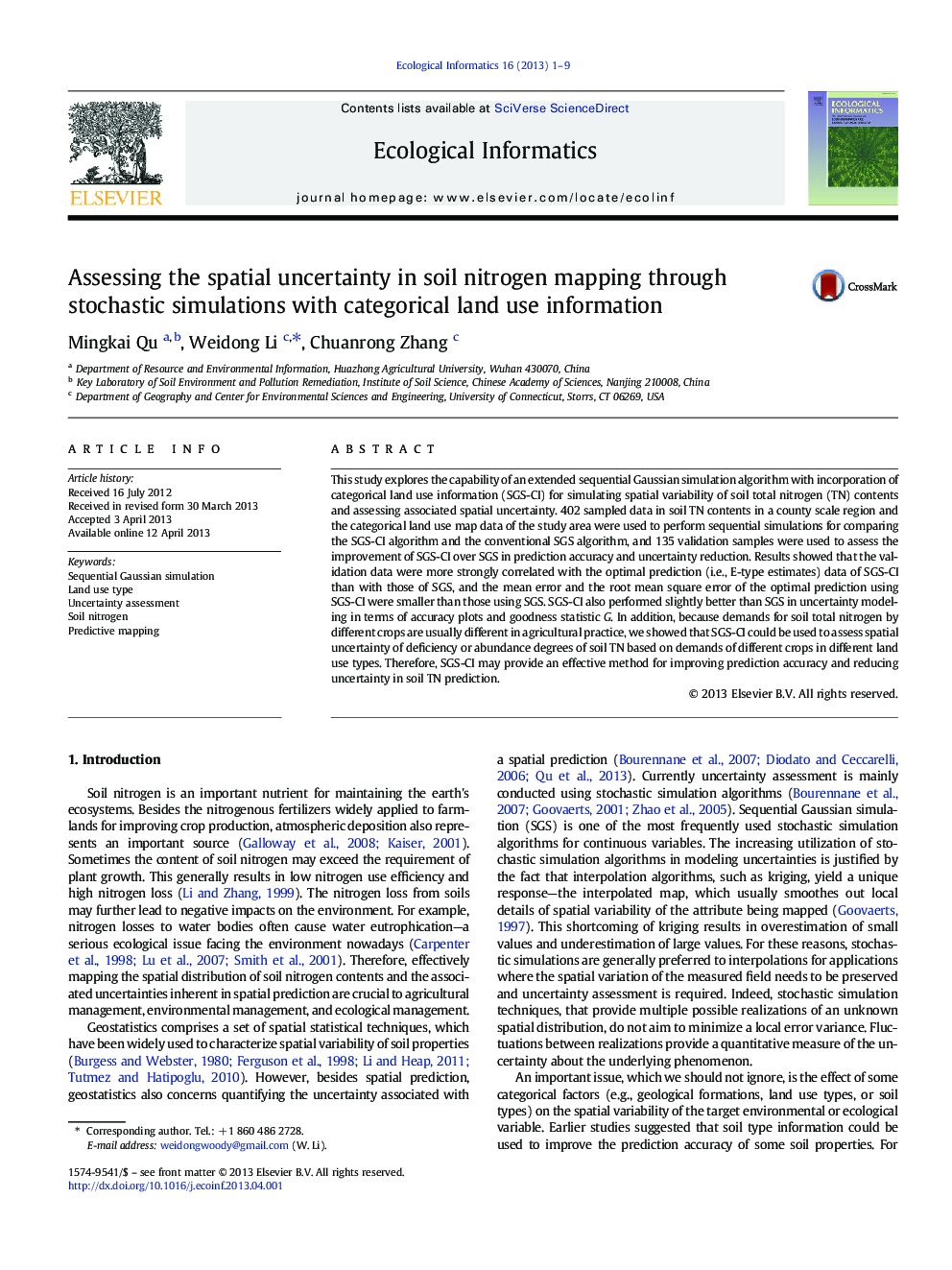| Article ID | Journal | Published Year | Pages | File Type |
|---|---|---|---|---|
| 4374975 | Ecological Informatics | 2013 | 9 Pages |
Abstract
This study explores the capability of an extended sequential Gaussian simulation algorithm with incorporation of categorical land use information (SGS-CI) for simulating spatial variability of soil total nitrogen (TN) contents and assessing associated spatial uncertainty. 402 sampled data in soil TN contents in a county scale region and the categorical land use map data of the study area were used to perform sequential simulations for comparing the SGS-CI algorithm and the conventional SGS algorithm, and 135 validation samples were used to assess the improvement of SGS-CI over SGS in prediction accuracy and uncertainty reduction. Results showed that the validation data were more strongly correlated with the optimal prediction (i.e., E-type estimates) data of SGS-CI than with those of SGS, and the mean error and the root mean square error of the optimal prediction using SGS-CI were smaller than those using SGS. SGS-CI also performed slightly better than SGS in uncertainty modeling in terms of accuracy plots and goodness statistic G. In addition, because demands for soil total nitrogen by different crops are usually different in agricultural practice, we showed that SGS-CI could be used to assess spatial uncertainty of deficiency or abundance degrees of soil TN based on demands of different crops in different land use types. Therefore, SGS-CI may provide an effective method for improving prediction accuracy and reducing uncertainty in soil TN prediction.
Keywords
Related Topics
Life Sciences
Agricultural and Biological Sciences
Ecology, Evolution, Behavior and Systematics
Authors
Mingkai Qu, Weidong Li, Chuanrong Zhang,
